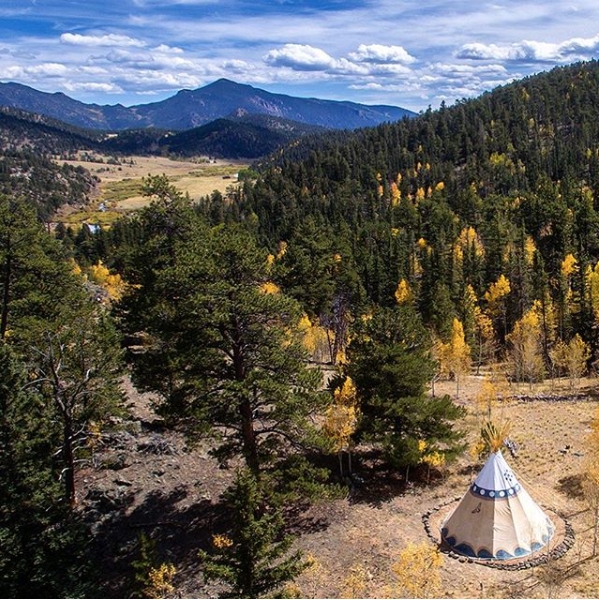Anxiety, Brains, Fear, Alex Honnold


A long time ago, our species evolved bigger brains. Luckily, these larger brains allowed us to communicate with one another more effectively, help us hunt bigger animals in teams, and share stories and experiences with one another. We started being pretty successful as Homo sapiens, and shared stories or mental frameworks allowed us to develop increasingly complex communities. We’ve gone on to create civilizations, nation-states, religions, and all kinds of amazing projects — cities like New York, Tokyo, and Berlin. Rocketships have taken us to the moon and back. Transportation, communication, and information networks connect the entire world. Older, as well as modern systems, provide water, electricity, and food to 7 billion humans all over the globe. Economic systems and forms of money help distribute and facilitate the acquisition, transfer, and storage of the world’s resources, goods, and services. Agriculture, sports, art, music, books, war…Honey Chipotle Chicken Crispers from Chili’s. We made it all. All with the help of these amazing brains of ours.

Recall, though, that our species was essentially plucked out from the middle of the food chain and put at the top. Or more specifically, that our brains were built to help us survive all the evolutionary pressures of the savannah. So these incredible brains of ours are still constantly on the lookout for danger (real or perceived). This can also be summed up by a simple tweet that makes me smile to this day:
This amazing organ that brought us to incredible heights also comes with problematic remnants from its past. In the modern world, these same fight or flight responses abound as perceived threats loom around every corner. Reading the news makes our cortisol levels rise and generally tells us everything is just about to fall apart. Fear/anxiety: used to be super useful as a survival mechanism. Now: usually not so much.
I decided to write today about this anxiety, a problem that these brains of ours experience frequently, and some strategies to combat it.
To help address this topic I want to share the story about a particularly awesome Homo sapien, Alex Honnold, who loves climbing. Thanks to a combination of nature and nurture, his brain is pretty special. See this area of the brain that fires on most people? The amygdala? Current scientific understanding tells us that this area of the brain is responsible for handling the limbic system and many of the resulting anxious responses in our bodies.
This brain area for Alex is essentially dead. He really doesn’t seem to “feel” or process emotions like fear like so many of us do: The Strange Brain of the Worlds Greatest Solo Climber
While his brain is a unique result of nature and nurture, I think we can learn a lot from Alex from the way he has nurtured this skill and how he approached his most recent triumph, what many consider to be one of the greatest athletic feats in modern human history, climbing El Capitan without a rope. It’s truly a mind-blowing feat for any of us to fathom. Luckily for us, there was a world-class film crew on hand to capture the experience: https://www.nationalgeographic.com/films/free-solo/

I can’t wait to see the film.
Even just looking at the videos or clips of this feat is enough to produce physical responses in the viewer. The co-filmmaker himself admitted that “[n]ot a day went by that [he] didn’t think about the worst.” [of Honnold plummeting to his death.] How did Honnold conquer this? Continue reading for some ideas.
While many of us will never reach Honnold’s level of “no response” that his brain and body exhibit through massive amounts of practice, there are some basic strategies we can use to improve ourselves in this area of life. Another group of sapiens I admire a lot for their ability to consistently and systematically overcome fear and stress is the U.S. Navy SEALs.

SEAL training teaches new recruits about four main tools they can use to combat the amygdala and all the resulting bodily responses:
1) Goal setting
People hear this a lot. I almost groan now because I have heard it from so many teachers and leaders over the years. But goal setting activates the higher part of our brain, the pre-frontal cortex, which helps keep the lower, survival-based amygdala in check.
Honnold had the goal of climbing El Capitan since about 2009 when he completed his free-solo of Half Dome. And he has devoted his life to climbing, and much of that time to the art of free-soloing. The planning and time that went into the feat is astounding.
Note that Honnold was also looking beyond his big goal, not letting it overwhelm him:
Asked after the historic event: “So you already have a new goal?”
It’s been a strategy the whole time I’ve worked on El Cap is to look past it, so that it’s not just all this one moment. To think about what’s beyond, what other stuff I’m excited about. So this just feels like a semi-normal day.
Otherwise you’re kind of setting yourself up for a major letdown?
You don’t want to put that much pressure on yourself where everything in my life focuses on this one moment. This has been my big focus for years and my big dream for years, but I would like to climb at my physical limits and step away from adventure for a little while.
2) Visualization
The brain is really bad at distinguishing imagined events and experiences from those that really happen. When you dig into the science deeper, you come to realize that everything stored biologically/physically in the massive networks of synapses we have is just a representation that the brain retrieves when required. There are many ways of creating these representations.
In the sporting arena, visualization has long been employed by top performers. Michael Phelps had the ideal physical body and coupled it with a fanatic training regimen. But he also began utilizing visualization as a 13-year old. His Coach, Bowman, would tell him to rehearse the perfect race in his head before he went to sleep. And at certain times in training would push Michael, telling him to “put the tape in.”
There is a distinct calmness that comes from experience. You can gain huge amounts of calm (and therefore better attend to the task at hand) through visualization.
Honnold both visualized and actually practiced his routes thousands upon thousands of times until the brain knew what to expect on a deeper, unthinking level. It became routine.
3) Self-talk
What we say to ourselves over and over again is incredibly powerful for our brains. While the science is still in flux on the matter, it can be helpful to know that the discussion on number of thoughts per day for a human usually falls in between 12,000 and 600,000+ “thoughts” (subconscious or conscious). If you can even tip some of your habitual thought patterns more in your favor it can be a massive help.
Others might just call this self-confidence. What do you constantly say to yourself? Is it empowering? Positive? Would your thoughts change if there was a Jumbotron above your head displaying your thoughts constantly to those around you?
Both consciously in the moment, and subconsciously built up over time, what we say to ourselves (about ourselves) has a lasting effect.
Honnold when asked by Tim Ferriss about self-talk:
When you are getting ready for a challenging climb, what does your self-talk sound like? Do you have any anything you ritualistically say to yourself before you get going?
No, I don’t really. I don’t self-talk like that. But normally if I’m planning on doing something challenging, I spend the time visualizing what the experience will feel like. With climbing, there’s a component of memorizing the actual moves. So I’ll think through the sequences and make sure that I remember which foot to move in which order and like how to do everything. And then if I’m climbing ropeless, then I’ll think through what it’ll feel like to be in certain positions. Because some kinds of movements are just scarier. It’s important to think through how that will all feel when I’m up there, so that when I’m doing it I won’t suddenly be like, Oh my God, this is really scary. I know that it’s supposed to be scary, I know what it’s going to feel like, and I just do it.

4) Regulation
AKA long deep breaths.
Simple breathing practices, awareness of breath meditation, yoga, etc. can all be helpful here, to help calm the body and mind as one. To tell your own brain, it’s okay, it’s safe, we’re breathing easily, there is no survival stress here.
Some closing thoughts from Alex on what life lessons he takes from climbing:
From the actual climbing itself, the most useful thing I’ve learned is how to differentiate risk and consequence and fear, and how to separate my feelings from what’s actually happening. When you’re really hungry you’re not like, Oh God, I’m hungry, I’m hungry! You’re just like, Oh, I’ll eat lunch in two hours. Fear to some extent should be the same way. You can register, Oh, I’m feeling fear right now, but know that sometimes that doesn’t matter. Sometimes it does, and you need to watch out for that. But a lot of times, you should be able to set that fear aside and do exactly what you’re supposed to be doing.
So there you go, some thoughts and four useful tools to help you work with your beautiful, amazing, unique, powerful mind when that is required.
If you liked this post or found it at all helpful, please share it and/or comment to let me know your thoughts.
Further reading and all links:
https://www.nationalgeographic.com/films/free-solo/
http://nautil.us/issue/39/sport/the-strange-brain-of-the-worlds-greatest-solo-climber
Human Reason and its Many Limits
I am a big fan of books that remind me that I am by no means a paragon of reason. As with all humans, I have many flaws, inconsistencies, and beautiful imperfections.
Behavioral economics often reveals many of these systematic human errors. It looks at the psychological, social, and emotional factors of decision making. The field has seen a resurgence in popularity in recent decades.
Daniel Kahneman and Amos Tversky are two of the more famous researchers in the field. They, along with many others, have done a splendid job through their work of reminding us all the ways in which we can be completely irrational. For a quick video run-down on some of these concepts see here: https://youtu.be/dqxQ3E1bubI?t=231
Here’s a great quote from the author of Predictably Irrational, Dan Ariely, that reminds me how much fun Grace and I would have on one of our road trips laughing at ourselves about how drawn we were to “free breakfast” being offered by different hotels: e.g. Well this place is only $79 a night AND they have free breakfast!!
“It is true that from a behavioral economics perspective we are fallible, easily confused, not that smart, and often irrational. We are more like Homer Simpson that Superman. So from this perspective it is rather depressing. But at the same time there is also a silver lining. There are free lunches!”
See also: Thinking, Fast and Slow ; The Undoing Project
Despite its rather pompous title, The Wisest One in the Room, by two social psychologists, was a recommendation from a friend. It was full of moments that reminded me that my view of the world is just that, my view. We get so stuck in our own heads and perspective that we forget this reality wayyyyy too often.
On naïve realism:
As distinguished British philosopher Isaiah Berlin wrote as he reflected on the bitter lessons of the twentieth century, “Few things have done more harm than the belief on the part of individuals or groups (or tribes or states or nations or churches) that he or she or they are in sole possession of the truth, especially about how to live, what to be and do— that those who differ from them are not merely mistaken, but wicked or mad: and need restraining or suppressing. It is terrible and dangerous arrogance to believe that you alone are right, have a magical eye which sees the truth, and that others cannot be right if they disagree.”
“People are sometimes quite willing to acknowledge that their personal experiences have influenced their judgment. But they insist that far from being a source of bias, their particular experiences are a source of enlightenment…it is not just that people tend to think they are less influenced by bias than others. They also tend to think that the very things that cloud other people’s judgment are sources of enlightenment for themselves. A wise person, in contrast, recognizes that there are two sides of every coin: a vantage point that makes some things easy to see can obscure considerations that would be obvious from another perspective.”
The book goes into great detail about the different forms and disguises these biases take, and how different situations, framing, language, and more influence us all.
I also appreciated the more practical tips they offered.
Some specific recommendations on better ways to practice happiness (without boring you with all the peer-reviewed studies behind them) from their chapter “The Happiest One in the Room:”
- Spend a bit more on experiences and a bit less on possessions.
- Manage the peaks and endpoints of experiences (peak-end rule)
- When you’re feeling blue, force yourself to get off the sofa and do something other than open a bottle of soda or beer— better still, do something for someone else.
Love,
Cody
Power or Truth: Yuval Noah Harari

In 21 Lessons for the 21st Century, historian Yuval Noah Harari delivers even more insightful, powerful messages about humanity at large. His books are full of passages that I find a lot of truth in and have changed the way I think. One such passage that is still on my mind after finishing the book this weekend is below:
“Blurring the line between fiction and reality can be done for many purposes, starting with ‘having fun’ and going all the way to ‘survival.’ You cannot play games or read novels unless you suspend disbelief at least for a little while.
To really enjoy football, you have to accept the rules of the game, and forget for at least ninety minutes that they are merely human inventions. If you don’t, you will think it utterly ridiculous for twenty-two people to go running after a ball. Football may begin with just having fun, but it can then becomes far more serious stuff, as any English hooligan or Argentinian nationalist will attest. Football can help formulate personal identities, it can cement large-scale communities, and it can even provide reasons for violence. Nations and religions are football clubs on steroids.”
CK: Here Harai makes an offshoot example of his main thesis, that the unique power of humans to create, tell, and live the stories we tell each other is both the bedrock and the unseen force that shapes all of society. These stories, for better and worse, have created and govern the entire world as we know it. He continues:
“Humans have this remarkable ability to know and not to know at the same time. Or more correctly, they can know something when they really think about it, but most of the time they don’t think about it, so they don’t know it.
If you really focus, you realise that money is fiction. But usually you don’t focus. If you are asked about it, you know that football is a human invention. But in the heat of the match, nobody asks you about it. If you devote the time and energy, you can discover that nations are elaborate yarns. But in the midst of war you don’t have the time and energy. If you demand the ultimate truth, you realize that the story of Adam and Eve is a myth. But how often do you demand the ultimate truth?
Truth and power can travel together only so far. Sooner or later they go their separate ways. If you want power, at some point you will have to spread fictions. If you want to know the truth about the world, at some point you will have to renounce power.
You will have to admit things — for example about the sources of your own power — that will anger allies, dishearten followers or undermine social harmony. Scholars throughout history faced this dilemma: do they serve power or truth? Should they aim to unite people by making sure everyone believes in the same story, or should they let people know the truth even at the price of disunity? The most powerful scholarly establishments —whether of Christian priests, Confucian mandarins, or communist ideologues — placed unity above truth. That’s why they were so powerful.
As a species, humans prefer power to truth. We spend far more time and effort on trying to control the world than on trying to understand it — and even when we try to understand it, we usually do so in the hope that understanding the world will make it easier to control it. Therefore, if you dream of a society in which truth reigns supreme and myths are ignored, you have little to expect from Homo Sapiens. Better try your luck with chimps.”
CK: Woah. An underlying truth of human history summed up in a matter of paragraphs. Harai’s expertise, combined with his clear writing (his own skilled story-telling) is truly remarkable. I will continue to think about this truth/power split for many years to come. Thank you, Yuval, for sharing your story and some of these truths you have arrived at after extensive study and work.
Let me know what you think- are there situations where this does not apply?
Besides all these stories, there is real life. Suffering, love, nature, joy, physics, relationships, food, etc. are all very real. There is truth. How do we best arrive there together?
———————
To hear more from master historian Yuval Noah Harari in the form of his (brilliant) books, borrow the book from a friend or library. If you are buying online use the links below and I will receive a very small cut (4.5% of the price) at no extra cost to you:
If you’re from the U.S. or buying from Amazon.com:
Sapiens: A Brief History of Humankind
Homo Deus: A Brief History of Tomorrow
21 Lessons for the 21st Century
If you’re from Germany or buying from Amazon.de:
Eine kurze Geschichte der Menschheit
Cody Reads: Man’s Search for Meaning by Viktor E. Frankl
Cody Reads Volume # 3: Man’s Search for Meaning by Viktor E. Frankl
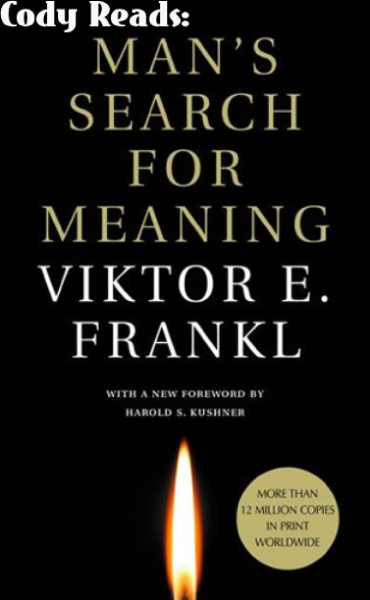
Man’s Search for Meaning is the most powerful and important book I have ever read. In it, Frankl chronicles his experiences as a Nazi death camp inmate in Auschwitz during the Holocaust.
Drawing on his direct experience of one of the darkest moments in human history, as well as his life and work after, Frankl discusses what it means to live a meaningful life.
As the back cover reads, “Frankl argues that we cannot avoid suffering but we can choose how to cope with it, find meaning in it, and move forward…[he finds] that the primary human drive is not pleasure but the pursuit of what we find meaningful…[his memoir] continues to inspire us all to find significance in the very act of living.”
I will revisit this book throughout my life. Perhaps the excerpts below will also change your life or outlook. But ultimately, they are a bit lacking without the rest of the surrounding story and text. For the complete experience, please rent the book from a library, borrow it from a friend, buy it from Amazon, just acquire it somehow and READ IT.
To this day, it leaves me awestruck, inspired, disgusted, proud, ignited, refreshed, at a complete loss for words, and ultimately guides some of my most intimate and spiritual beliefs. It is not a “perfect” book, but it has changed my life more than any other.
–––––––––––––––––––––––––––
Some of Frankl’s experiences in the camp “…offer sufficient proof that everything can be taken from a man but one thing: the last of the human freedoms– to choose one’s attitude in any given set of circumstances, to choose one’s own way.”
“Even though conditions such as lack of sleep, insufficient food and various mental stresses may suggest that the inmates were bound to react in certain ways, in the final analysis it becomes clear that the sort of person the prisoner became was the result of an inner decision, and not the result of camp influences alone. Fundamentally, therefore, any man can, even under such circumstances, decide what shall become of him– mentally and spiritually. He may retain his human dignity even in a concentration camp. Dostoevski said once, ‘There is only one thing that I dread, not to be worthy of my sufferings.'”
“The way in which man accepts his fate and all the suffering it entails, the way in which he takes up his cross, gives him ample opportunity– even under the most difficult circumstances– to add a deeper meaning to his life. It may remain brave, dignified, and unselfish. Or in the bitter fight for self-preservation, he may forget his human dignity and become no more than an animal. Here lies the chance for a man either to make use of or to forgo the opportunities of attaining the moral values that a difficult situation may afford him. And this decides whether or not he is worthy of his sufferings or not.”
–––––––––––––––––––––––––––––––
I had many other excerpts highlighted to share with you (this book is chock full of potentially life-changing passages), but they lacked the same punch and impact as when they are read naturally along with the rest of the story. Ultimately, this exercise in taking quotes out of great books is giving me pause. So, please, if you enjoyed (or didn’t enjoy) this post, or if it moved you in some other way, please give me feedback with a comment or email me. I am not sure I will continue with this series because it slightly cheapens the entire book experience…I only hope that it leads to you reading this masterpiece of human experience!
Love, Cody
Cody Reads: Sacred Hoops by Phil Jackson
Cody Reads Volume #2: Sacred Hoops: Spiritual Lessons of a Hardwood Warrior by Phil Jackson
Phil Jackson is widely considered one of the greatest coaches in the history of the National Basketball Association (NBA). His reputation was established as head coach of the Chicago Bulls from 1989 through 1998 during which Chicago won six NBA titles. (Sacred Hoops was published in 1995.) His next team, the Los Angeles Lakers, won five NBA titles from 2000 to 2010.
Below are a series of choice excerpts from the book:
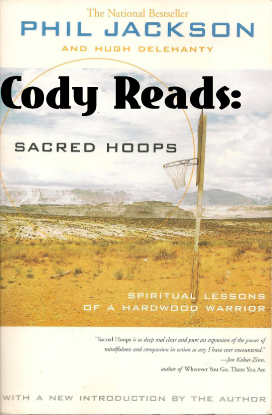
On Systems and Selfless Play
“The relationship between a coach and his players is often fraught with tension because the coach is constantly critiquing each player’s performance and trying to get him to change his behavior. Having a clearly defined set of principles to work with reduces conflict because it depersonalizes the criticism. The players understand that you’re not attacking them personally when you correct a mistake, but only trying to improve their knowledge of a system. Learning that system is a demanding, often tedious process that takes years to master. The key is a repetitive series of drills that train the players, on an experiential level as well as an intellectual one, to move ‘like five fingers on a hand’…not everyone reaches this point. Some players’ self-centered conditioning is so deeply rooted they can’t make that leap. But for those who can, a subtle shift in consciousness occurs.
The beauty of the system is that it allows players to experience another, more powerful form of motivation than ego-gratification. Most rookies arrive in the NBA thinking that what will make them happy is having unlimited freedom to strut their egos on national TV. But that approach to the game is an inherently empty experience. What makes basketball so exhilarating is the joy of losing yourself completely in the dance, even if it’s just for one beautiful transcendent moment. That’s what the system teaches players. There’s a lot of freedom built into the process…the freedom is shaping a role for yourself and using all of your creative resources to work in unison with others.”
CK: This is what team sports are all about. I’m lucky to be at a club with an exceptional coach who has and enforces systems of play, and where we chase these moments of transcendence as a team alongside our many supporters.
Spiritual Lessons from the Lakota Sioux
“Lakota warriors had a deep reverence for the mysteries of life. That’s where their power, and sense of freedom, came from. It was no coincidence that Crazy Horse, the greatest Sioux warrior, was first and foremost a holy man. To the Lakota, everything was sacred, even the enemy, because of their belief in the interconnectedness of all life. As one seer put it: ‘We are earth people on a spiritual journey to the stars. Our quest, our earth walk, is to look within, to know who we are, to see that we are connected to all things, that there is no separation, only in the mind.’
The Lakota didn’t perceive of the self as a separate entity, isolated from the rest of the universe. The stones they carved into arrowheads, the buffalo they hunted, the Crow warriors they battled, were all seen as reflections of themselves. Black Elk wrote in The Sacred Pipe, ‘Peace…comes within the souls of men when they realize their relationship, their oneness with the universe and all its powers, and when they realize that at the center of the Universe dwells the Great Spirit, and that this center is really everywhere. It is within each of us.
The Lakotas’ concept of teamwork was deeply rooted in their view of the universe. A warrior didn’t try to stand out from his fellow band members; he strove to act bravely and honorably, to help the group in whatever way he could to accomplish its mission. If glory befell him, he was obligated to give away his most prized possessions to relatives, friends, the poor, and the aged. As a result, the leaders of the tribe were often its poorest members.”
On Stillness and Meditation
“Little by little, with regular practice [of awareness of breath meditation], you start to discriminate raw sensory events from your reactions to them. Eventually, you begin to experience a point of stillness within. As the stillness becomes more stable, you tend to identify less with fleeting thoughts and feelings, such as fear, anger, or pain, and experience a state of inner harmony, regardless of changing circumstances. For me, meditation is a tool that allows me to stay calm and centered (well, most of the time) during the stressful highs and lows of basketball and life outside the arena….even those players who drift off during meditation practice get the basic point: awareness is everything.”
CK: Thanks to different mentors of mine, I have developed and maintained a mindfulness practice that continues to pay huge dividends in all areas of my life. It creates a space for me between stimulus and response where I am free to decide how I will react.
Professional Play
“Basketball is a form of play, of course, but it’s easy for players to lose sight of this because of the pressures of the job. As a result, my primary goal during practice is to get the players to reconnect with the intrinsic joy of the game. Some of our most exhilarating moments as a team come at these times. That’s certainly true for Jordan, who loves practice, especially the scrimmages, because it’s pure basketball, nothing extra.”
CK: I consider myself lucky to have been a part of many gyms (including now with SVG) where this is a focus.
“…the true measure of a star was his ability to make the people around him look good. Jordan still needed to learn that lesson.”
CK: When Karch Kiraly was asked why he was named the best volleyball player in the first 100 years of the sport, he mentioned his focus, preparation, effort, etc. but he also said that he was exceptional at making those around him better. In sand doubles, indoor sixes, or just as a human being, that’s a great life goal.
A Healthy, Mature Perspective on Winning and Losing
“Winning is important to me, but what brings me real joy is the experience of being fully engaged in whatever I’m doing. I get unhappy when my mind begins to wander, during wins as well as losses. Sometimes a well-played defeat will make me feel better than a victory in which the team doesn’t feel especially connected.
This hasn’t always been the case. As a young player, winning meant everything to me. My sense of self-worth rose and fell depending on my personal performance and how my team stacked up…”
CK: I think this is the case for any athlete who defines themselves first as an athlete as I did when I was younger. For a great video breakdown of the problems with this approach, or with those like me who struggle with perfectionism at times, see this video: Person over Player
Jackson again:
“My obsession with winning had robbed me of my joy in the dance. From that point on, I started looking at competition differently. I realized that I’d been trapped for years on an emotional roller coaster of winning and losing, and it was tearing me apart.
I wasn’t alone. Our whole social structure is built around rewarding winners, at the perilous expense of forsaking community and compassion. The conditioning starts early, especially among boys, and never stops. ‘There is no room for second place,’ the late coach Vince Lombardi once said. ‘It is and always has been an American zeal to be first in anything we do, and to win and to win and to win.’ How can anyone, from sports figures to entrepreneurs, possibly maintain their self-esteem when this attitude dominates our cultural mindset?
Eventually, everybody loses, ages, changes. And small triumphs– a great play, a moment of true sportsmanship- count, even though you may not win the game. Walt Whitman got it right when he wrote, ‘I believe a leaf of grass is no less than the journey-work of the stars.’ As strange as it may seem, being able to accept change or defeat with equanimity gives you the freedom to go out on the floor and give the game your all.
I used to believe that the day I could accept defeat was the day I would have to give up my job. But losing is as integral a part of the dance as winning. Buddhism teaches us that be accepting death, you discover life. Similarly, only by acknowledging the possibility to defeat can you fully experience the joy of competition. Our culture would have us believe that being able to accept loss is tantamount to setting yourself up to lose. But not everyone can win all the time; obsessing about winning adds an unnecessary layer of pressure that constricts body and spirit and, ultimately, robs you of the freedom to do your best.”
CK: Certainly in my first professional season in Switzerland, at times I let the pressure of competition and performing outweigh the pleasure of getting to compete and play a game I love.
What is So Sacred About Hoops (or Volleyball)?
“…That’s when I come alive: on the basketball court. As the game unfolds, time slows down and I experience the blissful feeling of being totally engaged in the action…That’s when you realize that basketball is a game, a journey, a dance- not a fight to the death. It’s life just as it is.”
If you enjoyed these excerpts, or they inspired you or made you think, please share the blog and/or comment below.
If you’re interested in reading the book in its entirety, you can buy Sacred Hoops for yourself by following this link.
Cody Reads: Tools of Titans by Tim Ferriss
Cody Reads Volume #1: Tools of Titans
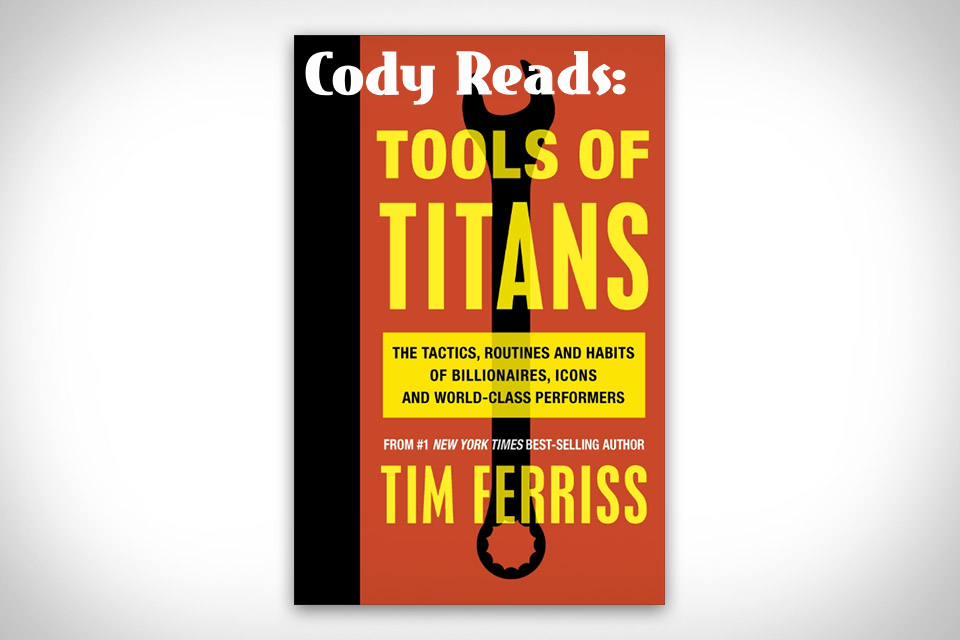
Hello all,
In my downtime and travel time as a professional athlete, I have the luxury of reading a lot of books.
For those of you that don’t have that luxury, I am going to begin sharing some of my favorite chunks of books I have read in the past few years.
Up first? Tools of Titans: The Tactics, Routines, and Habits of Billionaires, Icons, and World-Class Performers by Tim Ferriss, an amazing amalgamation of interviews from 200+ world-class performers. (Ferriss’ commentary denoted by TF: my own by CK: )
Don’t Overestimate the People on Pedestals
“Get inside the heads of the people who made things in the past and what the were actually like, and then realize that they’re not that different you. At the time they got started, they were kind of just like you…so there’s nothing stopping any of the rest of us from doing the same thing.” -Marc Andreessen
TF: Both Marc and Brian Chesky, CEO of Airbnb, have read and recommended Neal Gabler’s biography of Walt Disney. Marc also mentioned a Steve Jobs quote in our conversation, which is printed in full below. It as recorded in a 1995 interview conducted by the Santa Clara Valley Historical Association, while Jobs was still at NeXT:
“Life can be much broader, once you discover one simple fact, and that is that everything around you that you call ‘life’ was made up by people that were no smarter than you. And you can change it, you can influence it, you can build your own things that other people can use. Once you learn that, you’ll never be the same again.”
CK: For more stories and interviews from modern-day people who have made things, see Guy Raz’s How I Built This podcast. The other co-founder of Airbnb, Joe Gebbia, gives a great interview on the August 28, 2017 episode. It’s fun to remember that a mere ten years ago people would have thought the entire concept of Airbnb was absolutely nuts (some still do). Airbnb was recently valued at $31 billion.
Loving Thoughts
“In many of my public talks, I guide a very simple 10-second exercise. I tell the audience members to each identify two human beings in the room and just think “I wish for this person to be happy, and I wish for that person to be happy.” That is it…Everybody emerges from this exercise smiling, happier than 10 seconds before. This is the joy of loving-kindness. It turns out that being on the giving end of kind thoughts is rewarding in and of itself.
I tend to do a single 3- to 5- minute session at night, thinking of three people I want to be happy, often two current friends and one friend I haven’t seen in years. This loving-kindness drill takes the focus off of you entirely – which, for me, immediately resolves at least 90% of the mental chatter.”
A Focus on “Me”= Suffering
“This brain inside our heads is a 2-million-year-old brain…It’s ancient, old survival software that is running you a good deal of time. Whenever you’re suffering, that survival software is there. The reason you’re suffering is you’re focused on yourself. …Suffering comes from three thought patterns, loss, less, never.” – Tony Robbins
CK: There are other forms of suffering, certainly. But this can be very powerful for many of life’s worries.
“And I think ultimately, sometimes when we judge other people, it’s just a way to not look at ourselves; a way to feel superior or sanctimonious or whatever. My trauma therapist said everytime you meet someone, just in your head, say ‘I love you’ before you have a conversation with them, and that conversation is going to go a lot better.” -Whitney Cummings
On Action
“What you know doesn’t mean shit. What do you do consistently?” -Tony Robbins
“Perfectionism leads to procrastination, which leads to paralysis.” – Whitney Cummings
“Robustness is when you care more about the few who like your work than the multitude who hate it (artists); fragility is when you care more about the few who hate your work than the multitude who love it (politicians).”
Choose to be robust.
On Purpose
“If [someone] gave you $1 billion, how would you spend it besides the parties and Ferraris and so forth? If I asked you to spend $1 billion on improving the world, solving a problem, what would you pursue?” – Peter Diamandis
TF: Still struggling with a sense of purpose or mission? Roughly half a dozen people in this book have suggested the book Start with Why by Simon Sinek.
Naval Ravikant on Happiness and Perspective
“The most important trick to be happy is to realize that happiness is a choice that you make and a skill that you develop. You choose to be happy, and then you work at it. It’s just like building muscles.”
“If you study even the smallest bit of science, you will realize that, for all practical purposes, we are nothing. We’re basically monkeys on a small rock orbiting a small star in a huge galaxy, which is in an absolutely staggeringly gigantic universe, which itself may be part of a gigantic multiverse.
This universe has been around for probably 10 billion years or more and will be around for tens of billion years afterward. So your existence, my existence, is just infinitesimal. It’s like a firefly blinking once in the night. Nothing that we do lasts. Eventually, you will fade, your works will fade, your children will fade, your thoughts will fade, this planet will fade, the sun will fade…it will all be gone.
There are entire civilizations that we remember now with just one or two words like ‘Sumerian’ or ‘Mayan.’ Do you know any Sumerians or Mayana? Do you hold any of them in high regard or esteem? Have they outlived their natural lifespan somehow? No.
If you don’t believe in an afterlife, then you [should realize] that this is such a short and precious life, it is really important that you don’t spend it being unhappy. There is no excuse for spending most of your life in misery. You’ve only got 70 years of the 50 billion or however long the universe is going to be around.”
CK: A sobering (and some would likely say depressing) way to remember. But I think Naval makes a strong point here to remind us how precious our lives are.
If you enjoyed or have thoughts about this post please share, and/or comment below! Is Tools of Titans a book you would like to read in its entirety? I highly recommend it and find it easy to revisit and get value from.
Comment or email me and let me know what books you would like to see in upcoming issues of Cody Reads!
On Becoming, not Comparing
I consider myself very lucky to have been raised in the US and to have had so much exposure and interaction with so many great players, coaches, and personalities in our sport.
Recently, I heard a SANDCAST podcast interview with Taylor Crabb. I’ve admired Taylor for a long time for his approach to the game, the skills he has developed and earned, his fun-loving and down-to-earth nature, and the way he remains a great athlete and fierce competitor. He has quite the volleyball pedigree, but he has been a student of the game for a long time and has earned his many accolades.
Something Taylor said in that interview has stuck with me these past weeks and I wanted to share it with everyone. At some point when asked about his relationship on and off the court with his older brother, Trevor, Taylor said:

“I have a lot of goals in life. Not one of them is to be better than somebody else.”
Woah. I just love that. Especially coming from someone who makes his living technically by “being better than others,” — he is focused on what lies entirely within his control: his goals and the thoughts, words, actions, and habits that get him there. Such a healthy form of competitiveness.
As a moral, it is incredibly relevant today as social media makes it so easy to compare our daily lives (full of highs, lows, and everything in between) with the curated highlights of so many others.
This is some real wisdom, and now when I catch myself comparing myself to others (a very normal human tendency), I now more quickly refocus on my own goals. Sure it’s okay to admire others, see where you stack up, and/or be motivated by others, but way too often it is overdone and all of a sudden you’ve spent a bunch of time worrying about things you can’t control.
Below are other similar, great quotes in the same vein:
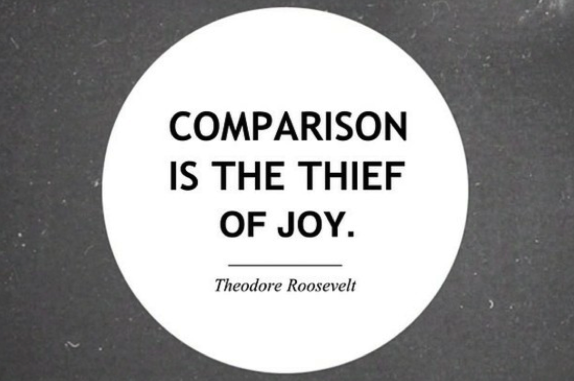





Even the greatest of the greats are susceptible to relentless comparisons, even when it doesn’t come from themselves. Lebron, Brady, Cristiano Ronaldo. Even at the ultimate peaks of their crafts, there will be throngs of humans seeking to endlessly compare them. To other current players, to other players in history, and if they get bored with that, even to past versions of the player in question. It is a VERY natural human tendency, and we will never be able to escape it completely, [see social comparison theory] but we can do better.
When you compare yourself, there will always be someone better and someone worse. Some say to look to those better than you for motivation, to those below you when you want to feel happier, or to simply be aware of your motives for comparison…I would prefer to be above all that as often as possible and instead turn my efforts more wholeheartedly towards becoming the very best version of myself that I am capable of becoming–as quickly and as often as possible.
A big thanks to Travis Mewhirter and Tri Bourne for the podcast, and for a small glimpse into the mentality of one of our country’s best. And thank you, Taylor, for the reminder to “Become, not Compare.”
On Bitcoin
Non-Crypto Update:
Life is good! I had a few absolutely wonderful few days in San Francisco with Grace and her family for Christmas and I love going to work every day as a professional athlete for SVG. We sit at a solid spot in the table and are looking to pick up a bunch more points in the coming weeks to put us in a great spot for the playoffs. I am lucky to be part of such a great club–with great leadership, die-hard fans, an amazing coach and assistant coaches, community support, and a driven, smart, and friendly group of teammates. All the best for 2018!!
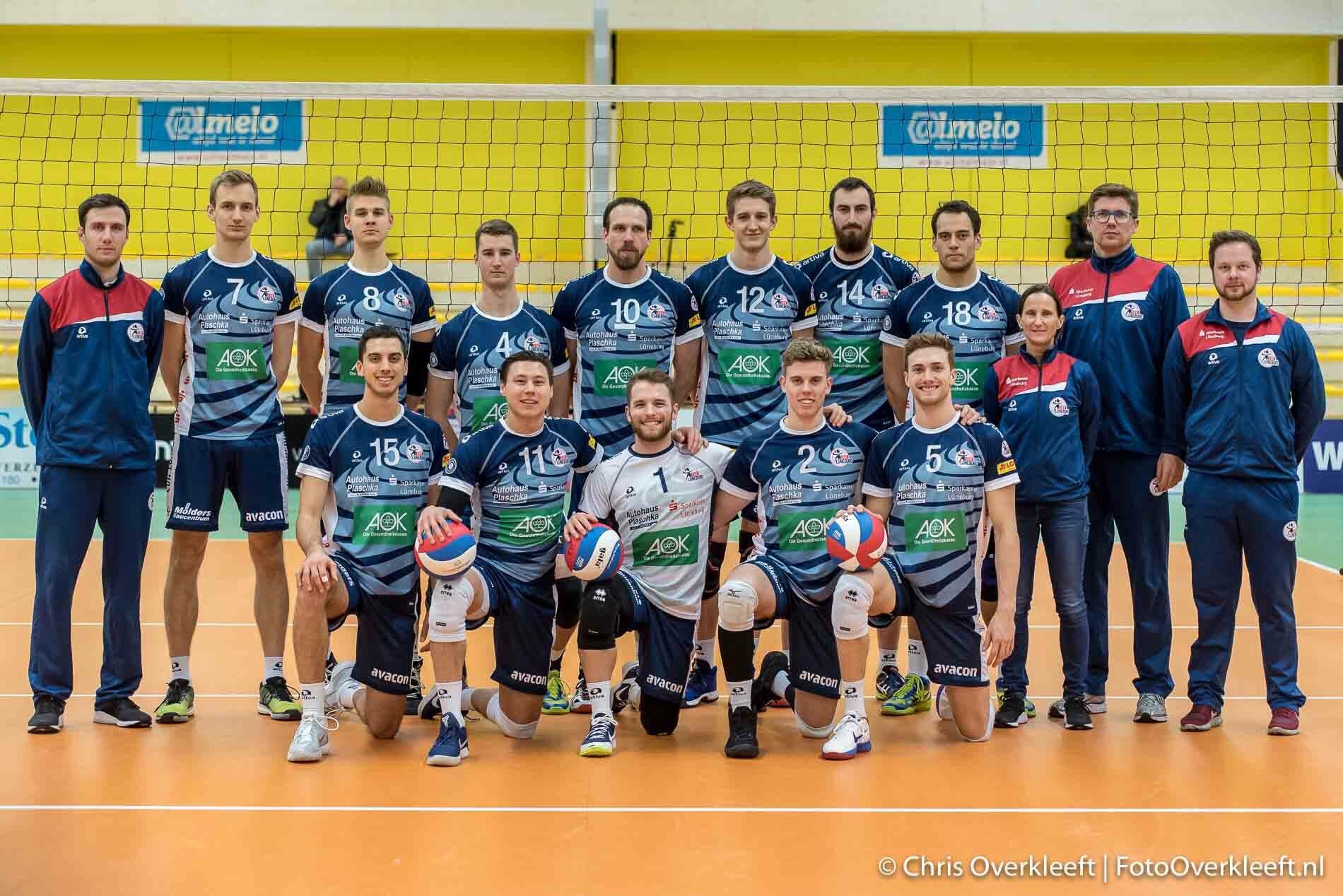
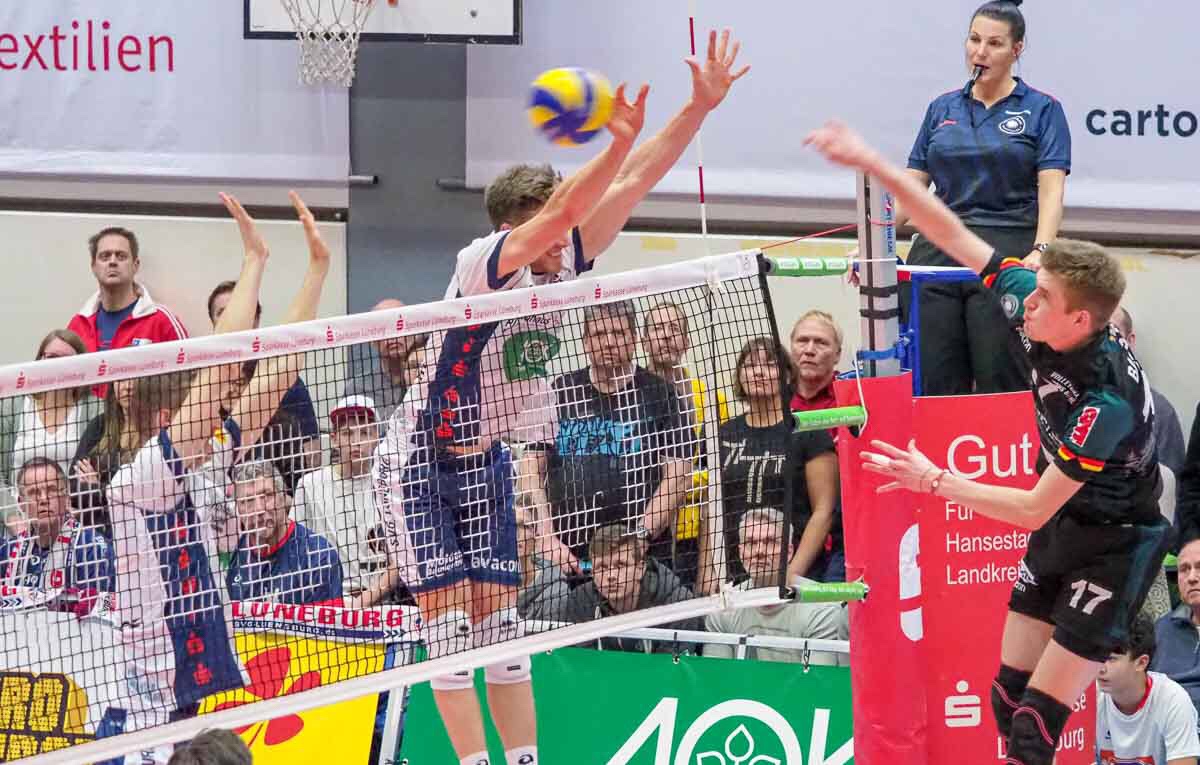

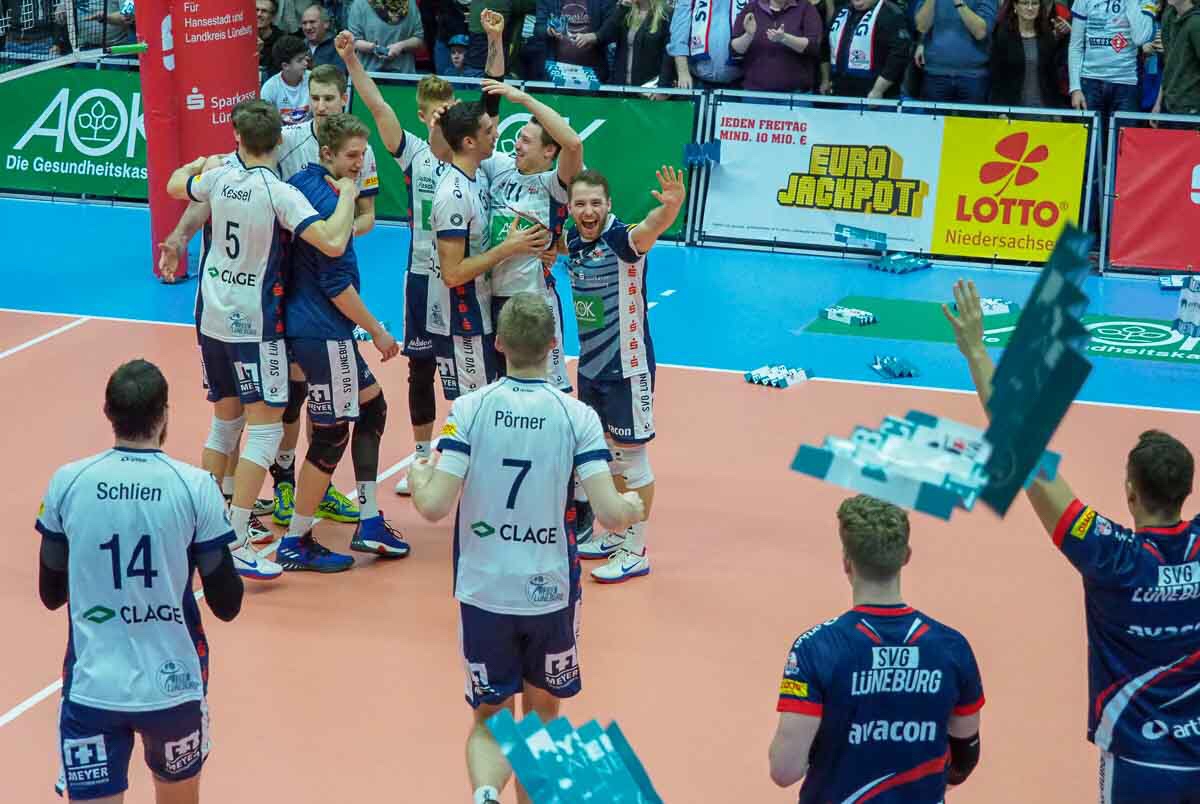
On Bitcoin
Bitcoin is fascinating to me.
So is cryptocurrency and blockchain technology in general. Writing helps me wrap my head around it all.
I’m particularly drawn to my own psychology towards the topic and the psychology of the masses. As an old adage goes, “What is truer than truth?” Answer: The Story. Like so many others I’ve been swept up in the story surrounding Bitcoin and cryptocurrencies. It is a powerful one- a novel and (hopefully) more efficient form of money with the power to make the world a better place. I also read the great book Sapiens a year back and it primed me to think of money differently than I had in the past- essentially as an elaborate shared trust system. Shells, silver, gold, gold-standard printed currency, fiat currency, ….bitcoin? I heard about cryptocurrency and blockchain this summer and then I read and absorbed anything I could get my hands on- and it is really intellectually exciting and it works at a functional level. To really simplify, Bitcoin solves the “issue” of trust with…math. The insights laid out in the original Bitcoin white paper are [were] truly revolutionary, and having an anonymous creator only adds to the intrigue. For a good run-down on Bitcoin see here.
As an American Millennial, it is also really easy for me to understand a loss of confidence in some of the existing institutions around us. Massive student loan debt, lower wages, and a tough job market have hit us hard. A large number of Americans, and more than half of Japanese millennials, are living at home. These factors and more add up to a lot of lost hope. “In the US, UK, and Japan, the generation of citizens aged 19-35 are the first in modern memory on course to be worse off than their parents.” That story sucks.
Given the times I have grown up in it is a lot easier to put some trust in a team of software engineers and a global network of computers that are in pursuit of a better (different) world than my tweet-happy President or the “too-big-to-fail banks.” I don’t think everything is broken but so many of the institutions we have grown up with are flawed or have failed many. Rebels, romantics, or curious people like me got excited about “the global revolution that blockchain could potentially bring to the world and its citizens. It [is] all about immutability, public ledgers, anonymity, bypassing third parties and banks, in order to re-distribute the global wealth and regain financial freedom and independence for all of humanity. If everyone becomes his or her own bank without any intermediary parties having control/power over your monetary assets, this is real freedom, at least in a monetary sense.” Bitcoin and cryptocurrency offer this solution, offer progress, offer hope, empowering individuals. And now it makes some rich. That’s a pretty powerful story.
Unfortunately, when you look at the story more closely, a lot of it starts to unravel. I’ll just look at Bitcoin for now to simplify the discussion a bit. Bitcoin is generally understood as decentralized, trustless, world-improving, a long-term store of value, and hints at overthrowing the current financial system. It’s not quite any of these. But it is an ingenious step.
Decentralized?: It has a small number of large-share owners and leaders at its core that make it more centralized than it might seem. Approximately 40% of coins are held by 1,000 individuals.
Trustless?: For almost everyone “accessing” the technology, it just requires trust in a different intermediary who haven’t been around that long and consistently run into a slew of problems and hacks.
World-improving?: I hope so, eventually. But right now it does little to tackle income inequality or sustainability. Although this article made me rethink a lot of the numbers the press has been throwing out about power consumption.
The “investing” space is also ripe for ICO scams and other problems.
Long-term store of value?: Maybe. You are placing an awful lot of trust in a group of people to NOT change the long-term rules of a particular chain.
Overthrowing current financial system?: It can’t be used to make reasonable daily purchases, even though certain forks and altcoin seek to fill that, and other niches.
But also remember it wasn’t built to do all that. As a historian it is important to go back to the primary sources. The white paper defines Bitcoin as a “purely peer-to-peer version of electronic cash [that] would allow online payments to be sent directly from one party to another without going through a financial institution.” This worked great. And it really was ingenious. A distributed, open-source, shared ledger system that could be used to transfer value backed by proof-of-work. Its generally anonymous nature in the beginning made it very appealing for darknet marketplaces like the Silk Road.
Thanks to the media cycle, word-of-mouth, and a powerful STORY, Bitcoin has taken off well beyond its more humble beginnings, and has led itself and the entire altcoin/token ecosystem with it, into what many (myself included) believe is a speculative bubble. Jealousy fueled by tales of new Bitcoin millionaires abound. And just because they knew about it first and invested big, “they got rich”- furthering the mania that you could benefit next. Only the ones that come on board before larger crashes get really hurt. Greater-fool theory in action. And –shocker– very few people know or understand what they are investing in.
The crypto space right now is really insane, the most recent champion of this irrational, speculative market: Ripple. Please take the time to inform yourself if you have the tendency to get swept up in the mania like I did: https://medium.com/@twobitidiot/i-see-you-xrp-fcf151feb96d
https://cryptoyoda1338.wordpress.com/2018/01/04/the-truth-about-ripple/
TL;DR: What big banks? XRP?? What do you own?? How are you ever going to use it?? Or most likely you’re just hoping to pass it off to the next guy. Nothing like a massive wave of financial speculation to add to the mania of this greater story.
BUT–the blockchain technology backing all this speculation works. That’s the coolest part.
Perhaps it’s easier to look at Bitcoin as a digital collectible, as Mark Cuban does. It exists and it’s scarce, and scarcity sells. It could be that, especially when one considers all the time, capital, and human resources that have already gone into it…It’s owning a piece of a revolutionary idea. If you’re a fan of collectibles of course then you can get in on the blockchain-collectible Crypto-Kitty mania that runs on the Ethereum blockchain. https://www.cryptokitties.co/faq (Disclaimer: Internet+free-time+curiosity+cats = I totally own some crypto kitties and now want other people to buy them. I did learn a bit more about how the network functions through this process, but I’m just telling myself that so I don’t feel like I completely wasted $40.)
As far as cryptocurrencies in general, other coins will come along, and from a business strategy standpoint (with open-source code being used and no real barrier to entry), as long as it is the most efficient, it should win out over the long-haul. It’s not easy to manage a decentralized project by its very nature, but with such quick on-ramps, innovation will explode. As one author puts it, there will be a Cambrian explosion of economic and shared government projects–out of which much will be learned. The challenges Bitcoin and other blockchain projects face now are often just that, technical challenges that will be overcome with enough time and effort. https://fee.org/articles/imf-head-predicts-the-end-of-banking-and-the-triumph-of-cryptocurrency/
Winning people’s trust is one of the main obstacles these new idea-dependent projects have. Bitcoin, despite its volatility, has been around since 2009, and human trust is built up over many small interactions over time. Years ago people many would have thought you were crazy if you asked them to put their credit card information on the internet to purchase something. Over time, though, people learned that the systems in place were secure enough to trust and thus a much more efficient payment method was adopted by the masses.
The real battle, as with many projects, is the battle over people’s minds. Can they understand it? Can they trust it? Do they even like the idea of what it means for the world? This is the battle that perhaps most fascinates me.
So we’ve got a bit of everything: A great story. An ingenious solution to an old problem that actually works but is not flawless by any means. A healthy dose of pure speculation in the space…and some revolutionary spirit in the form of code. Where do you stand? And why?
Please reach out- tell me where you stand and agree or disagree. Would love to hear your thoughts! I still am in love with parts of these stories that are being created and told- and frequently wage a battle in my own mind about what the future may hold. I love learning about it all. This technology and more will continue to disrupt our lives (hopefully overall in a positive way) as all technology can. But just wanted to get out some of my thoughts for right now. There are so many aspects of bitcoin/crypto/blockchain that are appealing to discuss…
Remember that where we spend our time and our money is a vote for how we want the world to be, besides just how we want to spend our precious time of conscious existence that we all have.
I will continue to stay involved and interested in the space but also plan on spending way more time invested in relationships with those around me.

Further reading:
Investor’s perspective (Thanks Cam!)
Full disclosure/disclaimer (you’re reading a volleyball player’s blog): None of the above is intended as investment advice of any kind. I hold small amounts of BTC and ETH.
USA Summer volley recap
After a disappointing loss against Düren last April in the quarterfinals (2-3, 3-0, 1-3), I flew back home to Colorado for a whole day and a half before getting in the car (thank you Dad!) and making the drive out to Anaheim, California to live with my mom and continue improving- this time under the auspices of USA Volleyball.
I had a great couple months of training in the USA gym. At first I was asked to come out for a week to train. I was competing at a really high level and ended up sticking around for three whole months of the summer. I learned so much on the court and in the weight room from my coaches and peers. It really is an amazing environment for any athlete USA Volleyball has set up in Anaheim.

I got to train and compete with players I have looked up to my entire career. Below are some photos from an intra-squad scrimmage I got to play in- and played really well in!
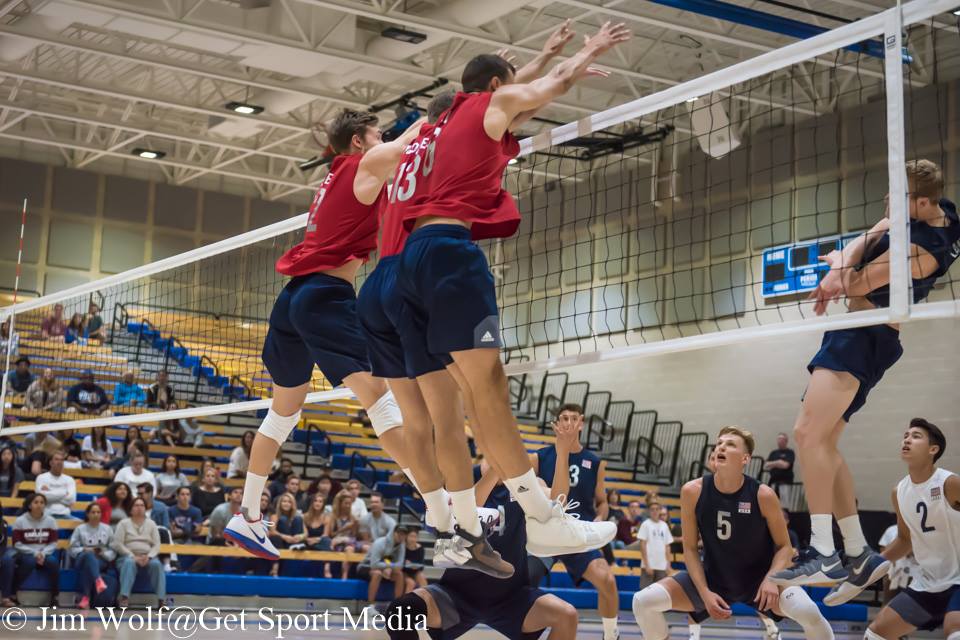


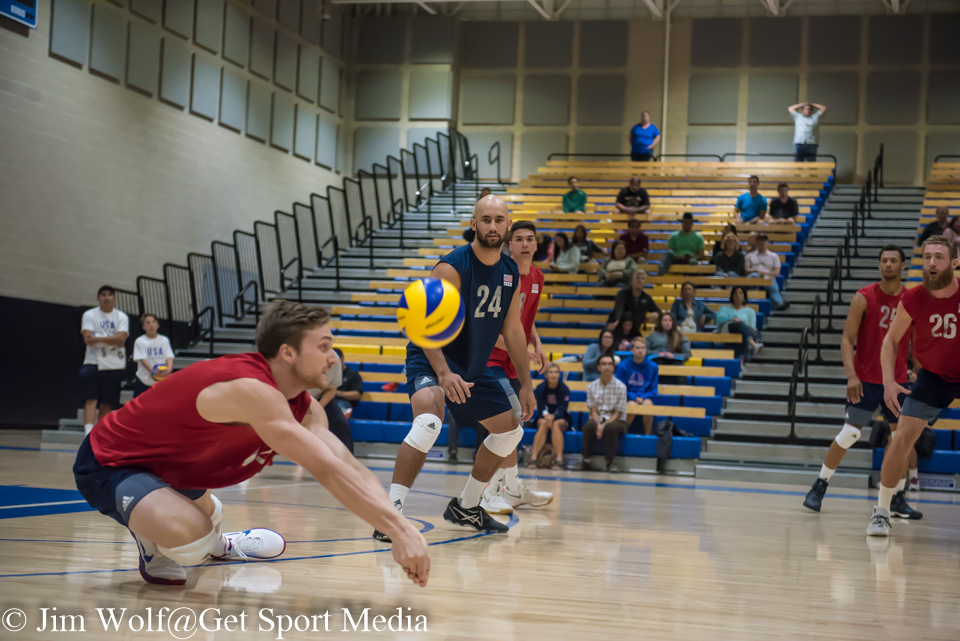
The first few weeks the main goal was preparing our World League Roster guys to compete. After a tough start, in classic USA fashion, the guys stayed true and pulled out some gutsy wins and with a little help made the Final Round where they ended up 4th.
The whole gym took a week off before the Pan Am Cup tryouts, the tournament I had aspirations of playing in. Grace and I took this opportunity (only full week we had together for many many months) and had an incredible time in Cabo.
When I came back for the 3-4 day tryouts I was not playing my best volleyball and a couple of other outside hitters were better during those days, and I didn’t make the team. I was pretty crushed. I had sacrificed so much- especially quality time with loved ones after already being gone for eight months overseas. It is in the job description, though, and others had been sacrificing a lot, too. Most importantly, there were a slew of lessons that came out immediately and over the next weeks as I reflected on the experience. And overall what an amazing time to be around the best players, coaches, and support in the nation. I also know I improved so much and put in a huge body of hard work even if it didn’t show during those key tryout days.
This may be one of the most important images in my athletic journey and I revisit it often:
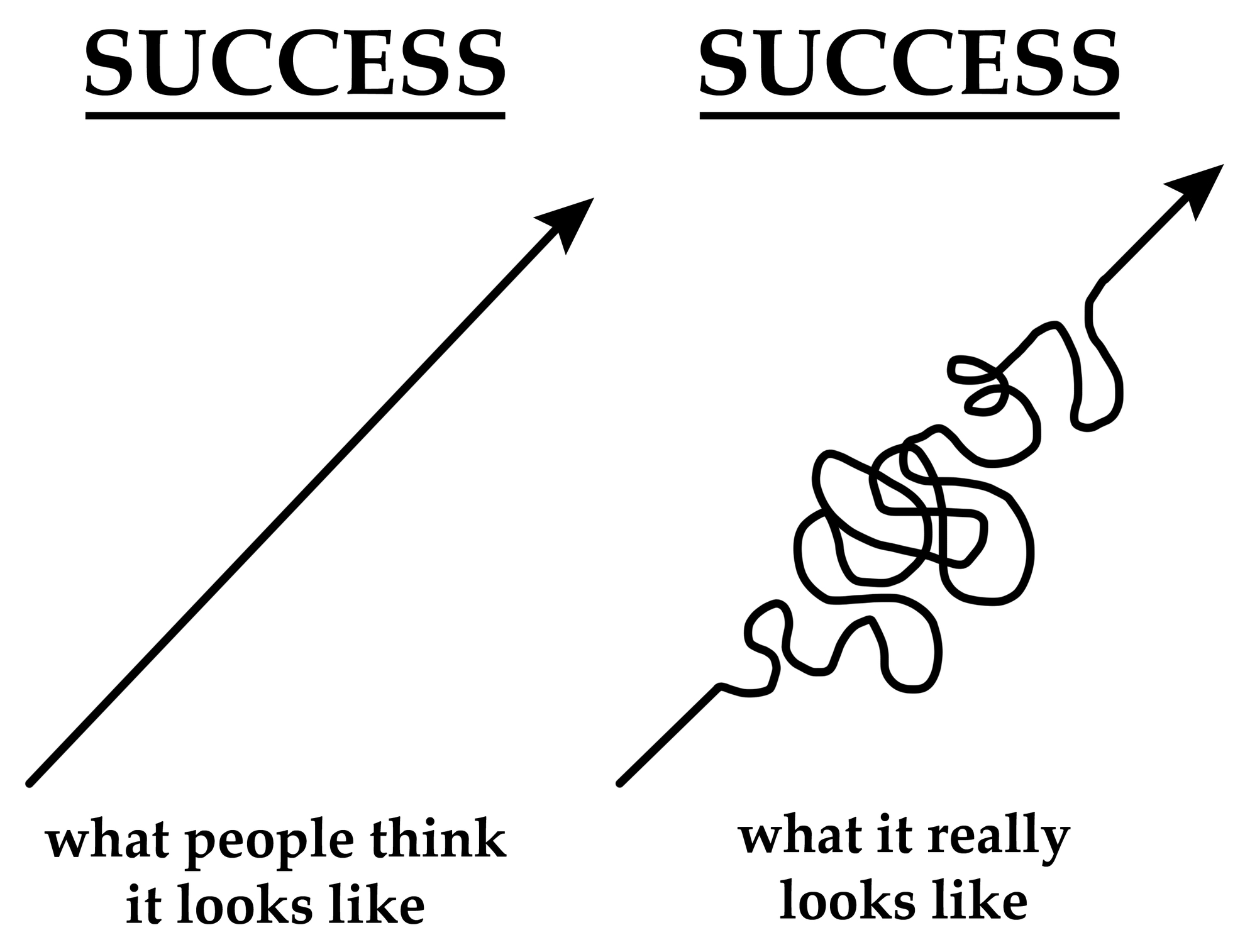
I think too often athletes shy away from sharing their failures, especially publicly. This is a product of many factors including our society’s obsession with being first and athletes not wanting to show weakness or vulnerability. Yet without the complete story this ultimately detracts from the true value and richness of the greater athlete experience.
My experience as an athlete makes me wonder a bit about mastery and sacrifice in general. I think to truly master something, you have to make a lot of sacrifices. My teammate Will Siroky shared a story with me a few years ago that has stuck with me. He said his coach was talking to him after one of his volleyball seasons ended and asked the somewhat cliché question “did you do everything you could have done?” and Will thought (as I do) “of course not- of course I could have done even a little bit more over these past months. I look back and can easily find a handful of moments where I was living my normal life. E.g. I could have not gone out with my friends that night, or I could have gotten a worse grade on that paper and gotten an hour of more sleep, etc.” The point is, you cane end up getting to a point where you are not living a life at all. So at some point it is about balance. Everyone makes hundreds of choices a day and strikes a balance between all these factors in life and we often celebrate those who lie at the extremes. Some are able to handle the sacrifices required by these extremes better than others, but it goes back to how you want to live your life.
I’d be curious to hear your thoughts on this. How does one walk the line between burn-out, improvement, and stagnation/getting worse. Marv Dunphy would add in the rather black and white aphorism “You’re either getting better or you’re getting worse.” While I know what he is getting at I think there is no easy answer…I guess it comes down to what your values are and then building your life and behaviors around that.
When it comes to selecting and living my values, at the end of the day I am drawn back to the Chinese proverb my dad shared with me when I was young that was passed onto him from my now-godmother Jenny Lang Ping, the “Iron Hammer” who helped dismantle the U.S.A. Women’s Team in the 1984 Gold-medal match but then through a friendship with my Dad and others came to coach in the United States and eventually coached the USA Women to a silver medal in 2008 (and then went on to coach the Chinese women to Gold in 2016). She shared with him that “Winning and losing are temporary, friendships last forever.” Some people immediately cringe when they hear this–I know used to–thoughts of “Championships are forever and remembered forever, etc!!” while there is some truth to that, too, increasingly I know how much more valuable the friendships and relationships are. Oh, and add in that Jenny is now the only volleyball player ever to win Olympic Gold as a player and a coach….maybe she was onto something…
Volleyball didn’t go 100% as planned this summer but there is still SO FREAKING MUCH to be grateful for. When I look at my volleyball and life journey as a whole I am just in awe. Support and love from so many have helped me get to today. Over this summer alone I spent time living my dream, made many new friends, rekindled old friendships, spent quality time with loved ones (that is so precious given the lifestyle I choose), had some incredible experiences with all these loved ones, and overall had an amazing time.
I have been a Reid Priddy fan since I was 8 and saw him play in Colorado Springs where I was growing up, and I have really looked up to the way he played and the way he is now sharing his journey to progress the sport forward. I highly recommend his “Max Potential” playbook for an amazing inside look at this life and sport. He shares:
“Volleyball was my passion but it became so much more! It became a training ground. As I worked to master the game, the game had a way of working on me…my character, how I handle pressure and so much more. Those are the things that I carry with me today. The medals and trophies are all great but it’s the man I have become that is enduring and volleyball was my internal training ground. It helped me develop the ability to be a good learner. How to work with others. How to adapt and change. How to overcome fear. That is the real GOLD that I carry around my neck today.”
With all this being said, I am recommitting to developing great relationships near and far, recommitting to sharing my experiences in many forms so that it may enrich and light the path for others, and in general choosing connection over isolation.
Update on this great new SVG season that is forming coming soon!!
EDIT:: My best friend Gavin shared this article with me that handles my thoughts in this blog, but more tactfully. Very well written and I think very true: https://www.nytimes.com/2017/08/22/well/mind/maybe-we-all-need-a-little-less-balance.html

